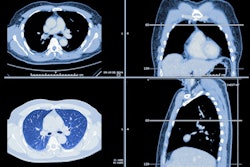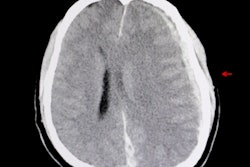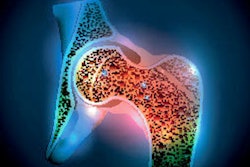
Dual-energy CT's (DECT) role in gout workup is evolving, boosted by improvements in technology, shifts in clinical practice, and increasing experience among radiologists, according to a study published January 27 in the American Journal of Roentgenology.
A team led by Dr. Francis Baffour of the Mayo Clinic in Rochester, MN, conducted a study that included 100 adults who underwent DECT for gout in 2013 and 2019. In 2013, the DECT exams were performed with a second-generation CT scanner, while in 2019, a third-generation scanner that featured improved spectral separation was used. The exams were categorized as positive, negative, or equivocal.
The 2019 exams had lower incidence of equivocal readings compared to the 2013 exams (16% vs. 33%), and joint aspiration was less likely after negative DECT interpretations in 2019 than in 2013 (2.1% vs. 17.4%).
Baffour's group attributed these improvements in part to technology advances, as well as to radiologists' increased familiarity with the modality for this application.
"The findings indicate an evolving role for DECT in the evaluation of gout following an institution's routine adoption of the technology for this purpose," the authors concluded in a statement released by the AJR.




















